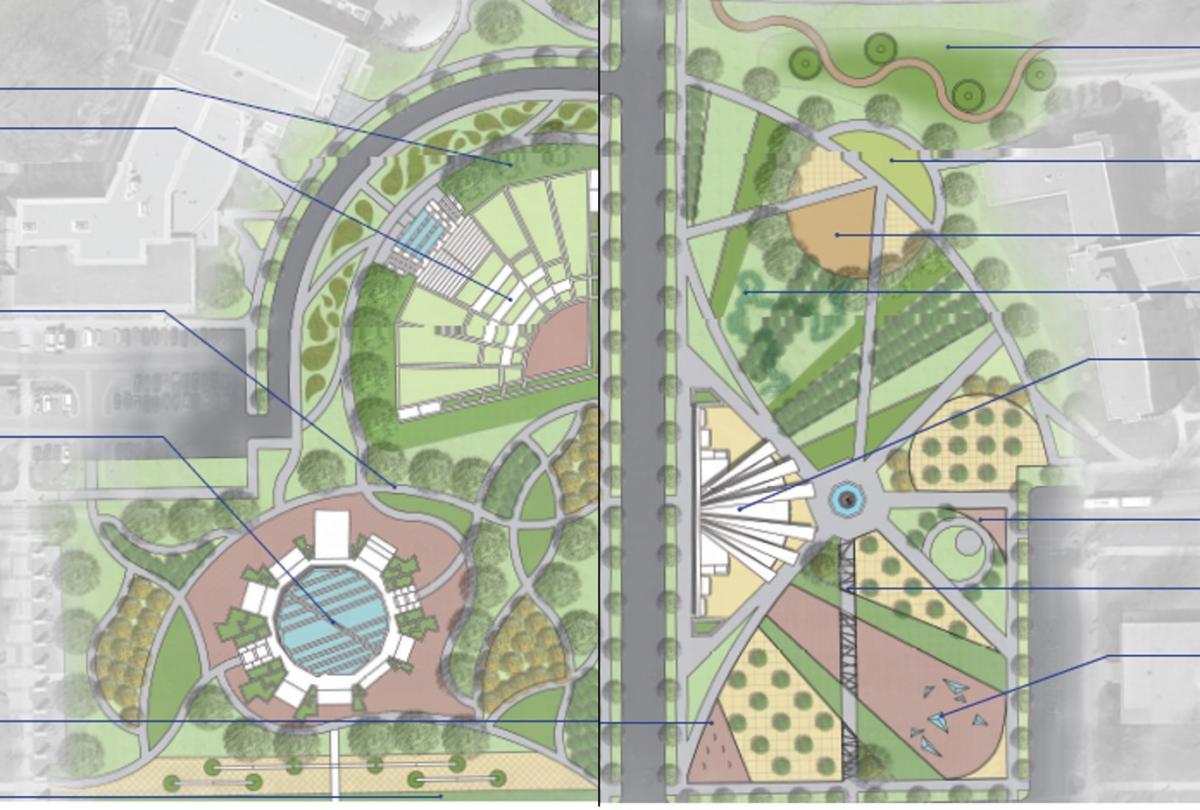
Green campuses abound thanks for student-developed award-winning green infrastructure designs. What’s the difference between AutoCAD 360 and Autodesk 360?
These and other stories are featured in this week’s CAD News & Tips for Govies is a weekly feature on Acronym that scans thousands of industry articles to present you with a regular source of CAD and GIS news, tips, events, and ideas that impact the public sector:
Students Transform Campus Landscapes using Green Stormwater Management Designs
Way to go University of Florida and Kansas State University! Their green infrastructure designs won 1st place in the Environmental Protection Agency’s (EPA) second annual Campus RainWorks Challenge. A total of 84 student teams from 29 states submitted green infrastructure designs for the challenge. Many of the designs proposed transformative additions to the campus landscape that show how managing stormwater at its source can benefit the campus community and the environment. Read more about the awesome projects here.
Autodesk 360 and AutoCAD 360 – What’s the Difference?
Cloud-based collaboration tools for designers and engineers are all the rage at the moment, and we’ve talked a lot on Acronym about AutoCAD 360, but wait, there’s another useful mobile and web-based tool that lets you access, share, and upload design files – Autodesk 360. Learn more about the difference between the AutoCAD 360 and Autodesk 360 from those in the know at AutoCAD 360 headquarters.
Save your Drawings to the Cloud with Autodesk 360
Want to see Autodesk 360 at work? Lynn Allen’s Cadalyst video below shows how to automatically save an extra copy of your drawing files to Autodesk 360 for easy access, no matter where you are. This backup system can be especially valuable when you’re working outside the office.
The Importance of BIM Standards (and Govie ones you can leverage)
BIM standards, much like traditional CAD standards, are used when creating and sharing BIM models. Using real-life examples, this blog explains why BIM standards matter, how they impact project productivity, and what these standards looks like. I’ll also point to resources that can help your agency build its own BIM standards. Read more in our blog: The Importance of BIM Standards.
How we can Use Less Water when we Build?
While a number of building owners have been creating and retrofitting their buildings with a variety of water-saving fixtures and systems – everything from waterless urinals to rainwater harvesting tanks –but construction-phase water (another large opportunity for water savings) has remained largely unaddressed. Here are some actions that all active construction sites – for both building and infrastructure projects – can take to reduce water use and ease the burden on our water resources. Read more from Skanska USA’s blog.
63,000 U.S. Bridges Need Structural Repair
State-by-state analyses of FHWA’s 2013 National Bridge Inventory data show that state and local agencies don’t have, and never will, the resources to meet repair and replacement needs. Nor should they be expected to, says the American Road & Transportation Builders Association (ARTBA). “DOTs are doing the best they can with very limited resources,” says Chief Economist Alison Premo Black. “Federal funding accounts for 52% of investment in roads and bridges, and Congress needs to come to grips with that.”
Read more from Public Works Magazine for a state-by-state ranking of the country’s most in-need-of-repair bridges and see how your state measures up.
Featured image courtesy of EPA.
















































